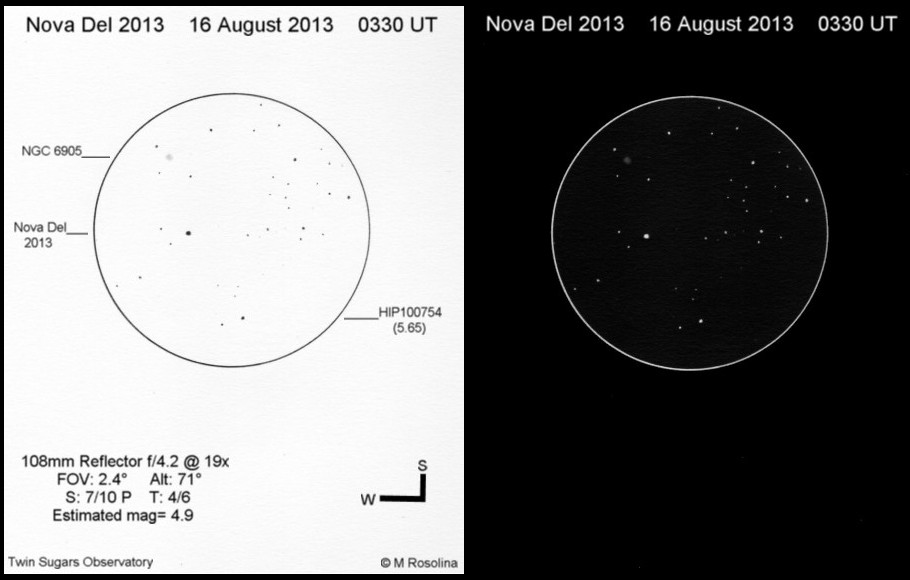
Hello,
Amateur and professional astronomers around the world were galvanized by the recent news of the discovery by Koichi Itagaki of a nova in the constellation Delphinus. The star (actually a binary system) went from about 17th magnitude to a magnitude of 4.5 over a three day period, putting it in the ranks of the 30 brightest known novae.
I had to wait patiently for the clouds to thin enough for me to get this view of the “new star” with my 108mm reflector. A small planetary nebula, NGC 6905 (also known as the Blue Flash) was in the field of view winking in and out as the clouds thinned and thickened.
This observation was made as the nova was still increasing in brightness. By comparing the nova to two nearby stars, eta Sge (mag 5.0) and 29 Vul (mag 4.8), I was able to estimate its magnitude at about 4.9.
A nova occurs when a white dwarf draws enough fuel from its companion star to start an explosive runaway hydrogen-fusion reaction. The resulting cataclysm can be 50,000 times brighter than our Sun (or more)..
I made this drawing at the eyepiece on Canson Pure White drawing paper with 2B and HB pencils and a loaded blending stump.
Name: Nova Del 2013
Type: Nova
Location: Friars Hill, WV USA
Date: 16 August 2013
Clear skies!
Michael Rosolina
Twin Sugars Observatory

Michael,
Very fine sketching and formatting.
Frank 🙂
Super Michael
Today magn was still around 5.0
Frank, Michel–thank you both very much. I hope the nova fades slowly so others may have a look at this relatively rare phenomenon.